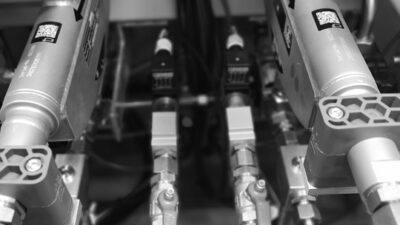Data science has emerged as one of the most in-demand fields in recent years, bridging the gap between technology and business to glean valuable insights from data. If you’re new to the world of data science and eager to dive in, you’ve come to the right place. This guide will walk you through the initial steps of building your very first predictive model.
1. Understanding Data Science
What is Data Science?
Data science is the interdisciplinary field that uses scientific methods, algorithms, and systems to analyze and interpret complex data. It combines elements of statistics, computer science, mathematics, and domain expertise to extract meaningful insights.
Why Learn Data Science?
With organizations increasingly relying on data to make informed decisions, the demand for data science professionals is skyrocketing. By learning data science, you can unlock numerous career opportunities across various sectors including finance, healthcare, marketing, and technology.
2. Prerequisites
Skills You’ll Need
- Basic Statistics: Familiarity with concepts such as mean, median, mode, standard deviation, and probability.
- Programming: Knowledge of a programming language, preferably Python or R.
- Data Manipulation: Understanding libraries like Pandas (Python) or data frames (R).
- Data Visualization: Skills in using visualization tools such as Matplotlib, Seaborn, or ggplot2.
Tools and Technologies
- Programming Languages: Python or R
- Jupyter Notebooks: An interactive environment for creating documents that contain live code, equations, visualizations, and narrative text.
- Libraries:
- For Python: NumPy, Pandas, Scikit-learn, Matplotlib, Seaborn
- For R: dplyr, ggplot2, caret
3. Step-by-Step Guide to Building Your First Model
Step 1: Define the Problem
Before building a model, you need to clearly define the problem you are trying to solve. What question are you trying to answer, or what prediction are you trying to make? For example, are you attempting to predict housing prices based on various features?
Step 2: Gather Data
Once you’ve defined your problem, gather the necessary data. This could come from:
- Open datasets available on platforms like Kaggle or UCI Machine Learning Repository
- Company databases
- APIs (e.g., Twitter API for social media data)
Step 3: Prepare the Data
Data preparation is a crucial step. This includes:
- Cleaning the data: Handling missing values, removing duplicates, and correcting inconsistencies.
- Feature Selection: Choosing the most relevant features (variables) that contribute to your prediction.
- Data Transformation: Normalizing or scaling your data to improve model performance.
Step 4: Choose a Model
Depending on your problem, choose an appropriate model. For a beginner, here are some common algorithms:
- Linear Regression: For predicting continuous variables.
- Logistic Regression: For binary classification problems (e.g., yes/no).
- Decision Trees: Useful for both classification and regression tasks.
Step 5: Split the Data
Divide your dataset into two parts: training data and testing data. A common split is 80% for training and 20% for testing. The training data is used to train the model, while the testing data is used to evaluate its performance.
Step 6: Train the Model
Using your training data, apply the chosen algorithms to create the model. In Python, for example, you can use Scikit-learn to fit your model using a simple command:
python
from sklearn.model_selection import train_test_split
from sklearn.linear_model import LinearRegression
X_train, X_test, y_train, y_test = train_test_split(X, y, test_size=0.2)
model = LinearRegression()
model.fit(X_train, y_train)
Step 7: Evaluate the Model
Once your model is trained, evaluate its performance using metrics like Mean Absolute Error (MAE), Root Mean Square Error (RMSE) for regression, or accuracy and F1-score for classification.
python
from sklearn.metrics import mean_squared_error
predictions = model.predict(X_test)
rmse = mean_squared_error(y_test, predictions, squared=False)
print(f"RMSE: {rmse}")
Step 8: Refine and Optimize
Based on the evaluation results, refine your model. You can experiment with different algorithms, tune hyperparameters, or further preprocess your data to improve accuracy.
Step 9: Visualize Results
Data visualization helps communicate your findings effectively. Use libraries like Matplotlib or Seaborn to create insightful plots that showcase your model performance.
Step 10: Deploy the Model
Once you’re satisfied with your model, consider deploying it using web frameworks like Flask or Django, which allows others to use your model via an API.
4. Continuous Learning
The field of data science is quickly evolving. Stay updated by:
- Taking Online Courses: Platforms like Coursera, edX, and Udacity offer great courses.
- Reading Books and Blogs: Follow data science blogs, research papers, and books by industry experts.
- Participating in Competitions: Engage with platforms like Kaggle to gain hands-on experience.
Conclusion
Embarking on your data science journey can feel overwhelming, but by taking it step by step, anyone can learn how to build their first predictive model. Embrace the learning process, stay curious, and continually seek opportunities for growth. With dedication and practice, you’ll undoubtedly find success in the dynamic world of data science. Happy coding!



